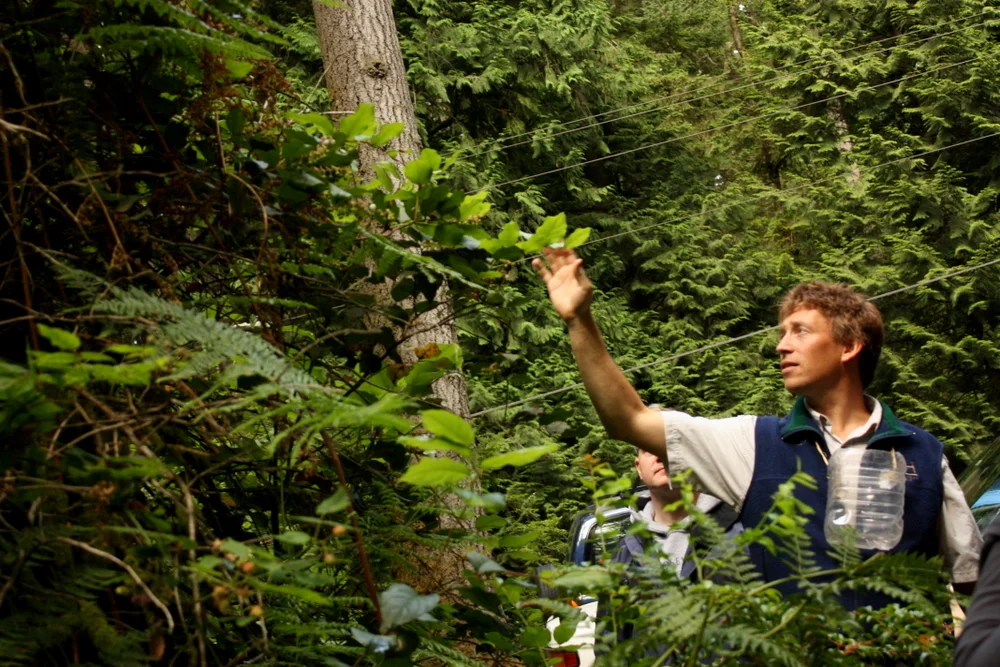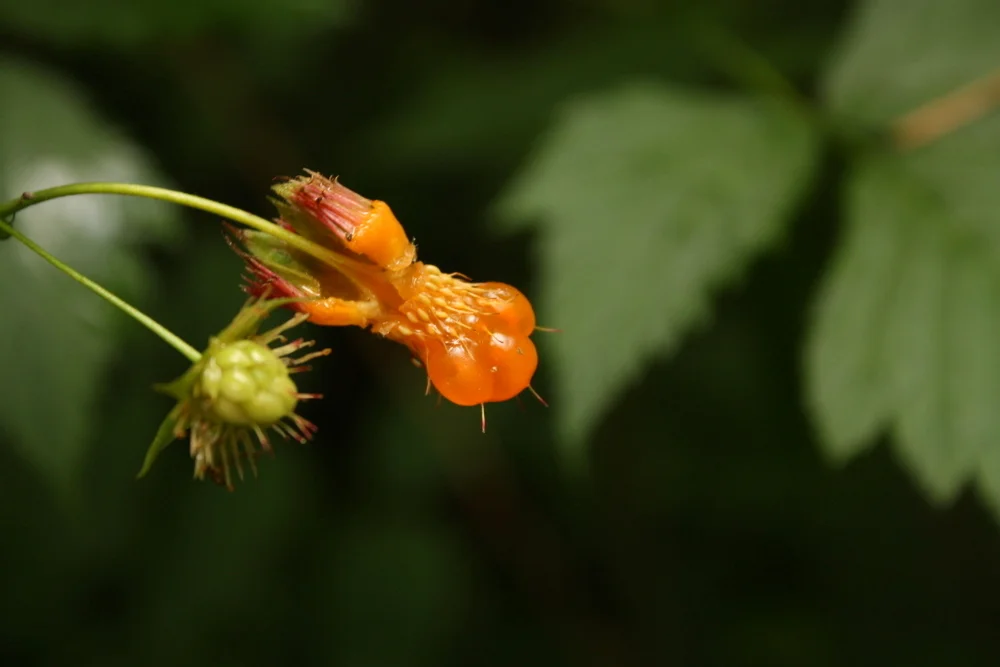














July 18, 2011: I took the ferry over to Bainbridge Island for a berry foraging class with Langdon Cook, author of Fat of the Land.

It's a...not very summery summer, so our berry-picking options were limited to the tart little red huckleberry, but there were a ton of them.

One of the ways to identify the red huckleberry (Vaccinium parvifolium) is by its bright green new growth branches.

I settled in for some picking. This was my first time, and I found myself taking to it. Berry foraging appears to trigger some kind of deep-seating gathering compulsiveness and I was quickly overcome with berry greed.

There was a lone blackcap raspberry (Rubus leucodermis) plant, although not yet ripe. Langdon also noted he likes the flavor of this berry. One identifying characteristic is its dark purplish branches.

We also have an evergreen huckleberry (Vaccinium ovatum), with dark purple fruit that ripens later in the year, sometimes remaining on the plant into the winter. They can be distinguished from the red by the shinier leaves and lack of green branches.

Red elderberry. Distinguishable from red huck by leaf arrangement (hucks have alternating leaves while red elderberry have opposite leaflets forming composite leaves) and berry arrangement (red hucks grow individually along the stem, while red elderberry form clusters in a cone-shape aka raceme).
The actual fruit of the red elderberry is technically edible when cooked but the other parts of the plant (including the stem attaching the berry) are poisonous. The fruit is not very tasty, so personally, I just consider this off limits: I am not willing to be so careful as to de-stem a zillion tiny berries nor risk illness if I missed too much non-berry material if the end result isn't even going to taste good.

Here my friend Brook (of www.LearnToPreserve.com) food styles her berry haul. She was a berry-picking champ, having been raised in the fruit-picking hot spot of Wenatchee. Check out her site for her huckleberry activtiy, too!

Some form of twistedstalk berries (in the lily family). Technically edible, they are also called "scootberries" because of the effect they can have on a digestive system. So I would steer clear.

...then used them as a topping for these tartlettes made with a quick crust and sweet cheese filling.

Garnished with a salmonberry, they were ready for the oven. I didn't get a picture of the finished product as Brook & I grabbed ours to eat on the ferry back, but they were delicious. Recipe here: http://fat-of-the-land.blogspot.com/2010/07/wild-berry-tartlets.html